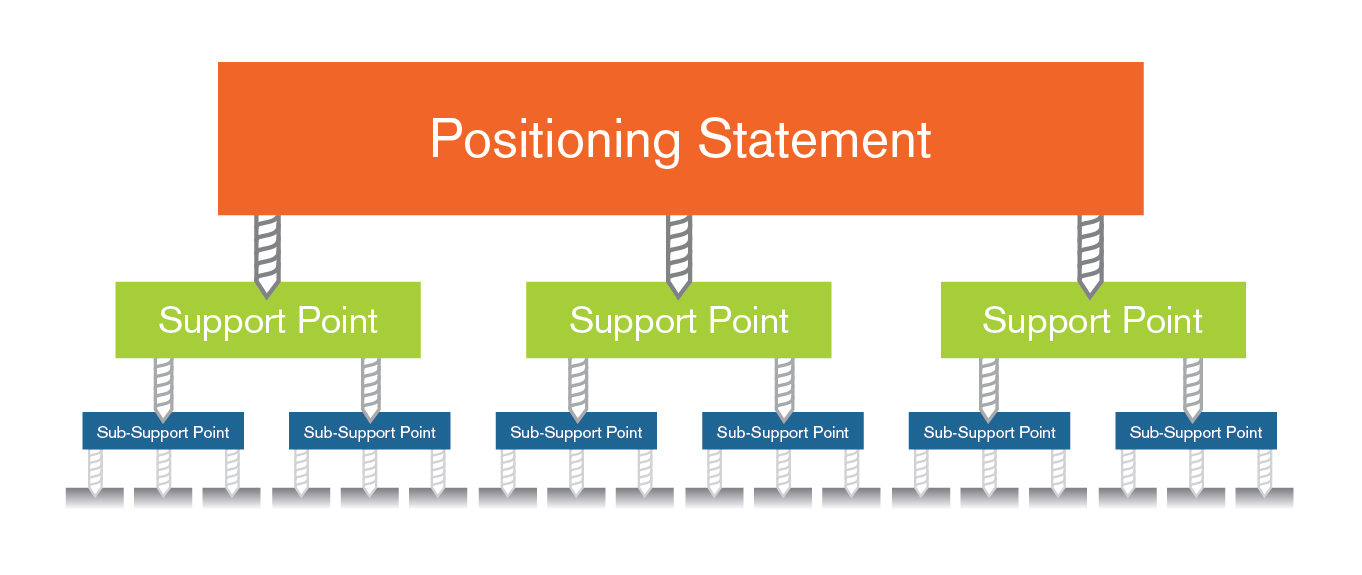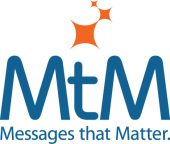Message Strategy Explained
In B2B technology marketing, your message strategy is the foundation for everything you do. It needs to be strong or your marketing efforts will fall apart. Your message strategy consists of a positioning statement and three to four support points. The positioning statement addresses the target market’s most pressing problem by stating a benefit; i.e. why the target market should care about your B2B product, solution, service, company or technology.
 Once you’ve developed a positioning statement, you bolster it with three to four supporting claims. Support points reinforce the importance and uniqueness of the positioning statement. They provide a reason to believe the positioning statement. Most importantly, support points should support, not compete with the positioning statement.
A message strategy can be extremely detailed and is like a recipe for all marketing communication. Follow the recipe and you get a good dish…. Ah story!
Your message strategy makes it easier to deliver the same message in all your marketing communications. Consistent execution of the same message strategy is a critical factor in successful marketing. Messages that Matter uses a formal, systematic positioning framework that helps you develop a unique message strategy; one that communicates concrete benefits and sets you apart from the competition.
The positioning statement
Your positioning statement becomes the central idea or theme for all your marketing activities. A positioning statement is a short, declarative sentence that states just one benefit, and addresses your target market’s No. 1 problem. It can be a conceptual statement and not necessarily copy. A good positioning statement easily adapts to all marketing communications such as product descriptions, websites, sales presentations, brochures, advertisements, public relations and presentations to investors and industry analysts.
Your positioning statement needs to be unique, believable and important or your target market will ignore your marketing efforts. In other words, they won’t get your message. Here are examples of good positioning statements:
Once you’ve developed a positioning statement, you bolster it with three to four supporting claims. Support points reinforce the importance and uniqueness of the positioning statement. They provide a reason to believe the positioning statement. Most importantly, support points should support, not compete with the positioning statement.
A message strategy can be extremely detailed and is like a recipe for all marketing communication. Follow the recipe and you get a good dish…. Ah story!
Your message strategy makes it easier to deliver the same message in all your marketing communications. Consistent execution of the same message strategy is a critical factor in successful marketing. Messages that Matter uses a formal, systematic positioning framework that helps you develop a unique message strategy; one that communicates concrete benefits and sets you apart from the competition.
The positioning statement
Your positioning statement becomes the central idea or theme for all your marketing activities. A positioning statement is a short, declarative sentence that states just one benefit, and addresses your target market’s No. 1 problem. It can be a conceptual statement and not necessarily copy. A good positioning statement easily adapts to all marketing communications such as product descriptions, websites, sales presentations, brochures, advertisements, public relations and presentations to investors and industry analysts.
Your positioning statement needs to be unique, believable and important or your target market will ignore your marketing efforts. In other words, they won’t get your message. Here are examples of good positioning statements:
 Once you’ve developed a positioning statement, you bolster it with three to four supporting claims. Support points reinforce the importance and uniqueness of the positioning statement. They provide a reason to believe the positioning statement. Most importantly, support points should support, not compete with the positioning statement.
A message strategy can be extremely detailed and is like a recipe for all marketing communication. Follow the recipe and you get a good dish…. Ah story!
Your message strategy makes it easier to deliver the same message in all your marketing communications. Consistent execution of the same message strategy is a critical factor in successful marketing. Messages that Matter uses a formal, systematic positioning framework that helps you develop a unique message strategy; one that communicates concrete benefits and sets you apart from the competition.
The positioning statement
Your positioning statement becomes the central idea or theme for all your marketing activities. A positioning statement is a short, declarative sentence that states just one benefit, and addresses your target market’s No. 1 problem. It can be a conceptual statement and not necessarily copy. A good positioning statement easily adapts to all marketing communications such as product descriptions, websites, sales presentations, brochures, advertisements, public relations and presentations to investors and industry analysts.
Your positioning statement needs to be unique, believable and important or your target market will ignore your marketing efforts. In other words, they won’t get your message. Here are examples of good positioning statements:
Once you’ve developed a positioning statement, you bolster it with three to four supporting claims. Support points reinforce the importance and uniqueness of the positioning statement. They provide a reason to believe the positioning statement. Most importantly, support points should support, not compete with the positioning statement.
A message strategy can be extremely detailed and is like a recipe for all marketing communication. Follow the recipe and you get a good dish…. Ah story!
Your message strategy makes it easier to deliver the same message in all your marketing communications. Consistent execution of the same message strategy is a critical factor in successful marketing. Messages that Matter uses a formal, systematic positioning framework that helps you develop a unique message strategy; one that communicates concrete benefits and sets you apart from the competition.
The positioning statement
Your positioning statement becomes the central idea or theme for all your marketing activities. A positioning statement is a short, declarative sentence that states just one benefit, and addresses your target market’s No. 1 problem. It can be a conceptual statement and not necessarily copy. A good positioning statement easily adapts to all marketing communications such as product descriptions, websites, sales presentations, brochures, advertisements, public relations and presentations to investors and industry analysts.
Your positioning statement needs to be unique, believable and important or your target market will ignore your marketing efforts. In other words, they won’t get your message. Here are examples of good positioning statements:
- “Peoplesoft Financial Management Solutions make every employee financially accountable.”
- “Microsoft Business Solutions – Navision® Financial Management frees you to focus on your business.”
- Short – fewer than 16 words (not counting product name)
- Simple, non-jargon language
- Adaptable to various marketing communications
- A compelling statement of one important benefit
- A conceptual statement…not necessarily copy
- Supported by three or four sentences that explain and substantiate the claim made in your positioning statement.
- Satisfies four evaluation criteria (unique, believable, important and usable)
